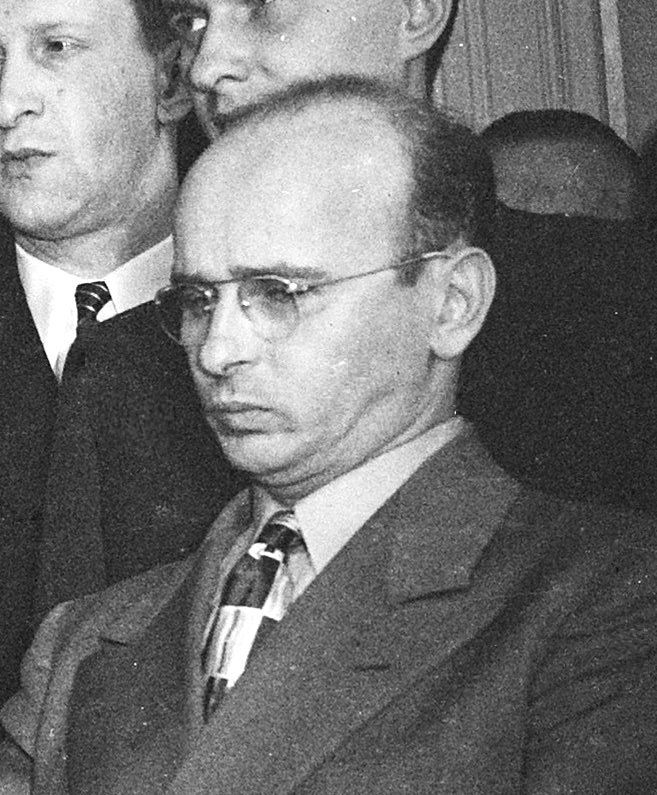
Samuel Reshevsky's Prime Years
How strong was Samuel Reshevsky in his prime?
Well, he won the U.S. championship eight times, the same number as Bobby Fischer. Reshevsky also played eight times in the Chess Olympiads (six times on first board).
Was he good enough to battle the chess greats? Yes. He beat (often many times) David Janowski, Efim Bogoljubov, Jose Raul Capablanca, Alexander Alekhine, Emanuel Lasker, Savielly Tartakower, Max Euwe, Mikhail Botvinnik, Salo Flohr, Paul Keres, Vasily Smyslov,Svetozar Gligoric, Miguel Najdorf, David Bronstein, Efim Geller, Viktor Korchnoi, Lev Polugaevsky, Bent Larsen and, obviously, Fischer.
You want more? Okay: Jan Hein Donner, Robert Byrne, Reuben Fine, Laszlo Szabo, Alexander Kotov, Yuri Averbakh, Isaac Boleslavsky, Larry Evans, William Lombardy, Arthur Bisguier, Ludek Pachman, Pal Benko, Henrique Mecking, Milan Matulovic, Borislav Ivkov, Lubomir Kavalek,, Ljubomir Ljubojevic, Oscar Panno, Anatoly Lein, Alexander Beliavsky, Anthony Miles, Larry Christiansen, Nick De Firmian, Joel Benjamin, Sergey Kudrin and many more.
Reshevsky was one of the best positional players in the world. He had fantastic technique and a good eye for tactics. He was very hard to beat (great defensive skills), and if the position screams to attack he could wipe you off the board. However, his openings were not great, but they were good enough make use of his other skills.

ONE: Torture
As I said in our “Young Reshevsky” article, it was clear that he could attack or play a quiet positional game. Here is something different: He traded pieces and entered a position that should be a draw. Why would he do that?
I would think that many players below master would chop with 13.Bxf6, but they would do it in the hope that they could attack on the kingside. However, Reshevsky realized that Black’s kingside is safe due to Black’s two powerful bishops and the fact that after 13…gxf6, White’s knight can’t hop onto e5 and g5.
So why would Reshevsky do this? The reason: The following endgame is indeed drawn, but White’s queenside pawn majority (3-vs.-2) and the fact that the knight can land on both the white and black squares (while Black’s bishop is stuck on the black squares), make it easier for Black to make a mistake.
Games like this are common among very strong players, and Reshevsky was one of the best on torturing opponents until they fall facedown.
As you might notice, Reshevsky was not a master of the openings. Here is another opening (like the Philip Woliston game) that didn’t give him much:
Nowadays, the top players have every opening worked out, but Reshevsky made sure he understood the basics and then he just outplayed his opponent.
What can we learn about these two Reshevsky games? Well…
Plusses: As mentioned above, Reshevsky could do just about anything.
Negatives: His openings were not great, but they were good enough to make use of his other skills. He constantly got into time pressure (a “disease” that most other American players also had).
TWO: Positional crush
This game shows Reshevsky's smooth positional skills.
THREE: A famous setup
FOUR: Another positional kill
FIVE: From the 50s to today
SIX: Break on through to the other side
SEVEN: Straightjacket
Reshevsky was a fantastic match player. Here are his results:
- He beat I.A. Horowitz (in 1941) with an undefeated three wins and 13 draws.
- He beat Isaac Kashdan in 1942 with six wins, two losses and three draws.
- He beat Najdorf 11-to-7 in 1952. Another match against Najdorf (in 1953) was played in Buenos Aires. Reshevsky won with the score of 9.5-8.5
- In 1952 he beat Svetozar Gligoric with the score of two wins, one loss, five draws.
- In 1955 in a team match against the USSR, Reshevsky played a four-game match against World Champion Mikhail Botvinnik. Sammy won the match with three draws and a win!
- In 1956 Reshevsky and William Lombardy went head to-head. Reshevsky won again by 1 win, no losses, 5 draws.
- Next was Arthur Bisguier in 1957. Once again Reshevsky won by four wins, two losses and four draws.
- Another match was created, this time with Donald Byrne. Reshevsky won with seven wins, three losses and no draws.
- In 1960 Benko put up a great battle, but Reshevsky got the nod with three wins, two losses and five draws.
- Reshevsky played a match against Fischer. You’ll see what happened in 1961.
NINE: Splat!
10: The game that went around the chess world
11: Bobby’s debacle
12: Mate is mate
13: A KID setup that Reshevsky often used
14: What happened to Fischer in 1961?
In 1961, a 16-game match was organized between Reshevsky and Fischer by Jacqueline Piatigorsky. Sadly, the Piatigorskies had to make a change that stipulated the next game would be early. At that point the match was even: two wins each and seven draws. Fischer went bonkers and refused to wake up that early, and the match ended. They gave Reshevsky the winner’s share of the prize fund.
Here is Reshevsky’s last victory in the match. Fischer was fine in the opening but he seemed to collapse after his unfortunate 18…Qd7. After that it was all Sammy!
15: Two positional gods
16: As the years go by
The game seems to be heading for a draw since the bishops are of opposite colors and nobody seems to have a weakness. However, that’s not true, and Black is already in some trouble.
Reshevsky died in April 1992.



